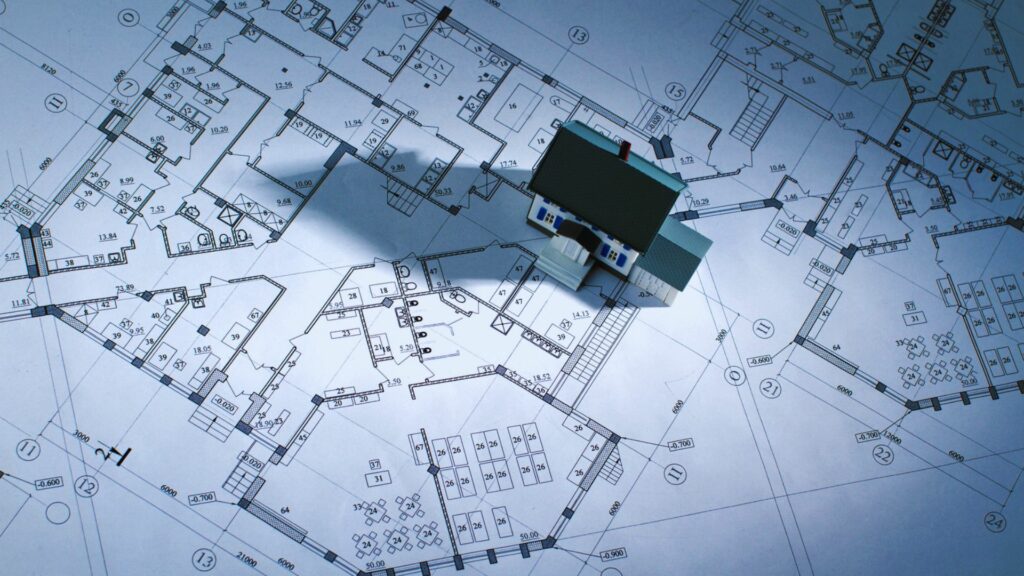Construction close-out documentation is evidence of the project's initial paperwork, design, execution success/mishaps, the outcomes, and any open issues that arise throughout the construction process.
Construction close-out documentation allows you and your future team to learn from their mistakes to succeed. Apart from capturing the project scope, it has helped subcontractors to join projects faster by reviewing documentation and comprehending the project objectives.
It aims to identify the best practices for and in future projects, and the final completion information is shared among architects and contractors.
Read our extensive article on construction close-out documentation as we showcase its importance, key components, the best practices for creating it, and the challenges that can arise.
Table of Contents
Overview
For a particular project to turn its on-paper outlook into reality and in case of repairs and maintenance, these documents assist project stakeholders in identifying precisely the project performance and any necessary details on the construction.
Below, we explain the need for access to construction close-out documentation through the collaboration of the general contractor, architect, subcontractor, and crew.
Critical components of construction close-out documentation
Let's delve into the essential elements below that make up the critical construction close-out documentation.
As built drawings
Commonly known as record or red-line drawings, this documentation compares the original designed version and the final specification or outcomes showing contrast. In addition, it gives an intricate blueprint of the building and the overall project scope.
These revised sets of drawings describe what project construction is and how it came to be after any adjustments that may occur. Apart from indicating all changes made, these documents accurately depict the final building while acting as a reference for future repairs and maintenance.
As built drawings include;
- Changes to materials used, size, design, and type
- Final dimensions, dates, and detailed information of any modification done.
- Changes to locations, windows, plumbing, and systems
- All construction issues and their solutions
- Any design changes and those done after the inspection
- Construction that happens outside the original scope
Operations and maintenance manuals
These documents are a valuable guide to the construction giving information on the operation, duties, and functions of teams and maintenance of the building's equipment and systems. In addition, they ensure that the building gets renovated with all issues addressed.
Operations and maintenance manuals entail;
- Accurate building details, descriptions, and changes made
- All original drawings of the building and revised versions
- Safety and health information, schedules, register with all equipment, and detailed explanation of each operation done.
- All contact details and emergency procedures to follow in case of failure of safety measures
- Certificates, guarantees, certificates, and equipment needed.
Warranty information
Warranty info details the warranties and guarantees given by contractors on manufacturers and equipment. They ensure value for money, ensuring the building is up to par.
For example, If you purchase a drilling machine for construction, you will need the warranty info if it breaks or stops working. However, if the equipment is insured and within the warranty period, you can replace or mend it without paying.

Final inspection reports
Ensure you have your final inspection reports as they indicate if you passed all codes and regulations and if your construction is deemed safe for its required purpose. Positive inspection reports show that your building is ready for consumers, and you can begin payments. We advise you to always have these reports in check to avoid dragging the construction process.
Start doing all inspection reports early to avoid any last-minute rush. Early planning will ensure you finish your project on time and per all construction protocols.
Punch lists
Punch lists show the final key changes and tasks you must correct and complete. During the final check-through of the construction, you can access punch lists to help identify any mistakes and corrections. These documents offer the most satisfactory last building, ensuring all construction rules and policies are followed.
Before you sell a building, make sure you have your punch list, as it will give a to-do list of all activities and their action points, including the last changes done.
This document will ensure that all parties are satisfied; you, your team, and the consumer.
Certificate of occupancy
This document certifies that a completed building follows the code and is safe to occupy. Usually issued by the local government, the certificate of occupancy helps identify inhabitable construction that needs to be more consumer ready. Ensure you get the exact structure the client needs so you can look for paperwork early.
Have your certificate of occupancy early so that you avoid delaying the construction job and the consumer can start using the building.
Best Practices for Creating Construction Close-out Documentation
Start early
Starting the construction close-out process will give you easier access to the necessary documentation to finish the job and fasten payments. Only after completion will the consumer prepare for cash release. So prepare early and create a close-out checklist to ensure you get all essential documents that will aid in completing the job, like the final inspection reports that failure to have is deemed illegal!
Construction close-out documentation gives an assurance that work is complete. To make this process easier, start amassing the documents before the end of your project. Know what you are looking for to access documents at the pre-, construction, and post-construction phases.
Establish clear communication channels.
Construction close-out documentation is a formal recognition of the completion of a project. This information communicates to all stakeholders as an assurance that the team executes and adheres to all policies and regulations. You can ensure that communication remains open and transparent with the appropriate section.
Open communication avenues will help project teams formulate perfectly summarized construction close-out documentation. From the jump, let every team player know their roles and execute all project goals and objectives from start to finish.
Standardize documentation processes
All construction projects that follow and accomplish standardized goals receive permits and inspections. For example, if you choose to construct a hospital, you will still have to follow the standard rules for the building to be fit for use.
A well-standardized system will ensure that you adhere to the rules of construction. Ensure all documents follow an organized structure to ease information access at the construction close-out documentation. Have a plan and always work as a team; it will help finish the job and speed up payments.
Hire a third-party consultant.
Project communication can either make or break a construction project. As you access these documents, ensure you don't do it alone, as it can get overwhelming. Instead, involve a third-party consultant to help with the information and confirm that all documentation is as accurate and time conscious.
A third party could be your fellow team members, a project manager, or a construction consultancy agency. The reason for consulting in construction is to align and confirm all information as true from both ends, the contractor and the consumer, for its positive completion.
Always counter-check your construction close-out documents to ensure they adhere to the project's code and regulations. Then, you can finish your project and request payments with proper permits and inspection.

Challenges in creating construction close-out documentation
Lack of standardized processes
Follow standardized processes to avoid the creation of loopholes and faulty documentation that can delay the construction project. Choose an organized system and start this project close-out in a structured way. When you begin this process, have all the documentation needed and follow all the rules to avoid dragging out the creation of these documents.
Following a standardized way of construction will help you adhere to the construction rules while still making the client happy. You will finish your job faster if you standardize the processes and take each at a time. The standard methods of construction are; pre-construction, construction, and post-construction.
Poor communication
Construction projects with poor communication make the creation of construction close-out documentation easier. Let your team members know their roles while constantly communicating with each other. Create a Whatsapp group to ease communication and send emails of any viable documents for the close-out process.
You can also hire a third-party consultant better to communicate details between the client and the team. Good communication translates to more accessible access to information needed to formulate documentation. Utilizing a third party in creating and managing construction close-out documentation will make it faster to offer documentation, close the project and begin payment requisition.
Time constraints
We recommend understanding the project scope to allow early access to information. If creating construction close-out documentation starts late, it will make it easier to manage the documents and finish the project. Have the documentation early and ready so that you can avoid going past your schedule and delaying the entire construction job.
Even though you make it on time, always ensure you do these documents correctly to identify risks and potential outcomes in your next project. Consider acknowledging the contributions made by your team to congratulate them and place all mistakes to mitigate risks better and solve any issues.
The trick is to avoid looking for documents acquired during the pre-construction and construction phase at the close-out process. Constructions can only operate with documents like; permits, inspection reports, certificates of occupancy, and more, so aim to get them at the very beginning of the project.
FAQs
What are the critical components of Construction Close-out Documentation?
This detailed summary of the construction process accounts for the whole process, i.e., project scope, budget, teams, details, inspection and permits, schedule, risks, and changes undergone during the process. Some examples of construction close-out documentation are; punch lists, warranty info, certificates of occupancy, as-built drawings, etc.
Who is responsible for creating and managing Construction Close-out Documentation?
Traditionally, the creation and management of construction close-out documentation was left solely to the contractor. Today, other team players including; sub-contractors, the design team, the construction manager, and even a third-party consultant, are involved in these processes to ease access to information for the project close-out. In addition, keeping construction close-out documentation online or on software in the digital era is easier, making storing and saving documents easier.
What are some common challenges in creating Construction Close-out Documentation?
There are several challenges when creating construction close-out documentation. Some of them include; time constraints, poor communication, lack of standardized processes, and lack of proper preparation. However, operating alone or without a third-party consultant can make access to documentation complex, allowing communication channels to get accurate construction close-out documentation.
What are the consequences of not having complete and accurate Construction Close-out Documentation?
If you fail to acquire complete and accurate construction close-out documentation, you will not be able to complete payments, which can halt payments. On the other hand, accessing the correct documentation can ensure the accomplishment of tasks and the project schedule. You and your team will also need help to acquire knowledge on achievements or mistakes to mitigate risks better.
Summary
From the above article, it is clear that every construction needs to have construction close-out documentation. These documents must be correct and complete to ensure the project ends successfully. Following the best practices in creating and managing close-out documentation will ensure that your construction is consumer-ready and you can begin processing payments.
To avoid making the same mistakes:
- Have all documentation ready, i.e., punch list, warrant info, as-built drawings, and many others.
- Become aware of the challenges that may arise before and after the construction.
- As you keep track of the project's schedule, remember to have only accurate details for the best close-out documentation process.
Failure to have some documents like permits and inspections is illegal during construction. If you still need to get a certificate of occupancy, get it early to prevent delaying the client. To be secure, ensure you have all the documents to reap the full benefits of the construction close-out process.

